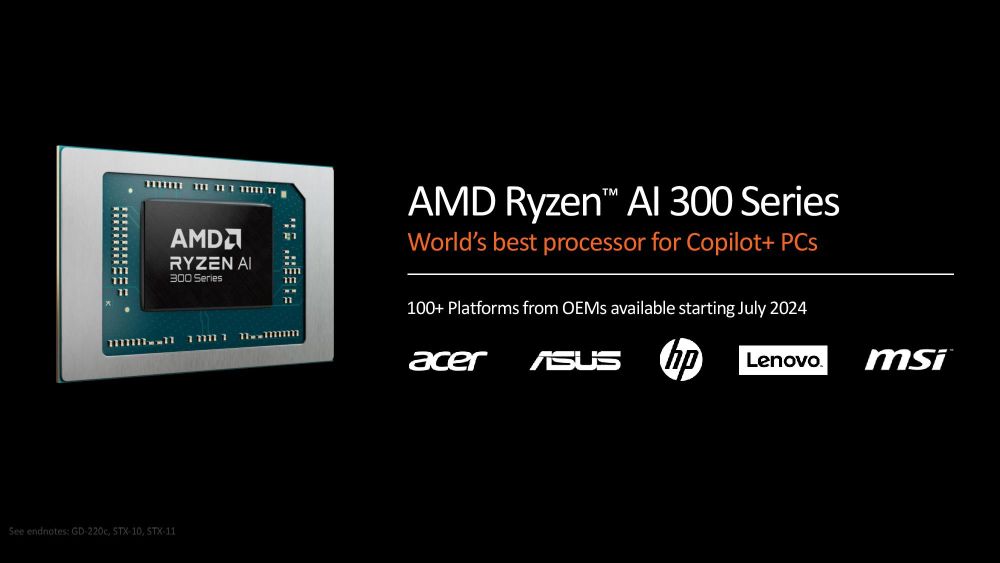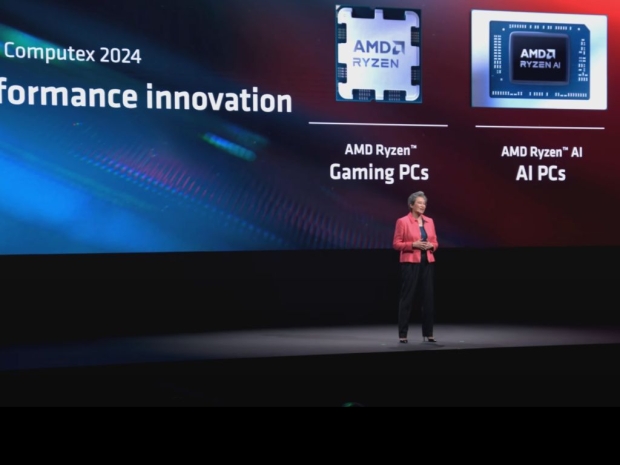AMD Ryzen 9000 series desktop CPUs with 16 IPC uplift from Zen 5
AMD has officially announced its new Ryzen 9000 series processors at the Computex 2024 keynote. Based on the new Zen 5 architecture and built on a 4nm manufacturing process for the CCDs and 6nm I/O, these will bring an IPC improvement of around 16 percent compared to the Zen 4 architecture. In terms of performance, AMD claims these beat the Ryzen 7 7800X3D in gaming performance, which also means they are faster than the Intel 14th-gen Raptor Lake Refresh counterparts as well.
According to AMD, the 16 percent average IPC improvement comes from improved branch prediction accuracy and latency, higher throughput with wider pipelines and vectors, and deeper window size across design for more parallelism. It also gets double the instruction bandwidth, higher data bandwidth, as well as a redesigned FPU that should double the AI performance and AVX512 throughput.
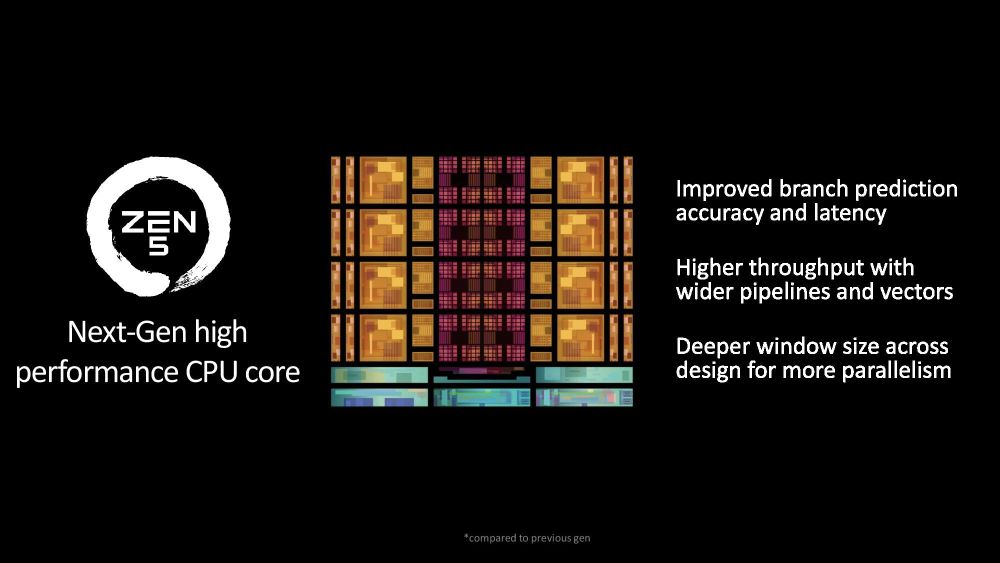
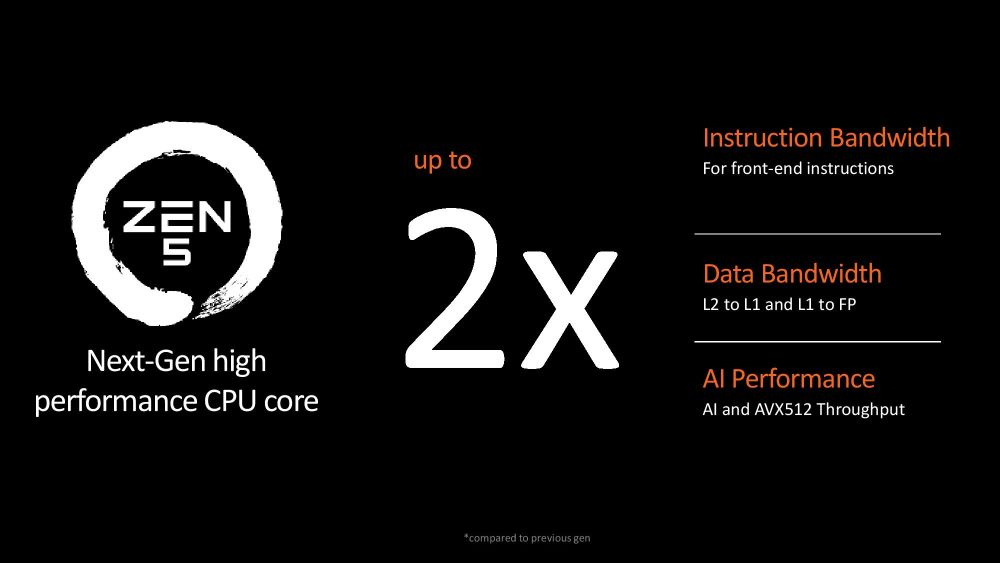
AMD is launching a total of four SKUs in the Ryzen 9000 series, and since we are looking at a chiplet-based design, like on previous Ryzen desktop CPUs, you are looking at 6-core/12-thread, 8-core/16-thread, 12-core/24-thread, and 16-core/32-thread SKUs. As expected, the 6-core and 8-core SKUs use a single CCD design, while 12-core and 16-core get two CCDs, which is expected considering that each CCD comes with eight Zen 5 CPU cores, each with 1MB of L2 cache and sharing 32MB of L3 cache.
The flagship is the Ryzen 9 9950X, a 16-core/32-thread SKU with 80MB of total cache, a maximum boost of 5.7GHz, and a TDP of 170W. The Ryzen 9 9900X is a 12-core/24-thread SKU with 76MB of total cache, a lower 5.6GHz max boost, and 120W TDP. The list includes a single Ryzen 7 9700X SKU, an 8-core/16-thread SKU with 40MB of cache, a 65W TDP, and a max boost of 5.5GHz, as well as a Ryzen 5 9600X, a 6-core/12-thread SKU with 5.4GHz max boost, 38MB of cache, and the same 65W TDP.
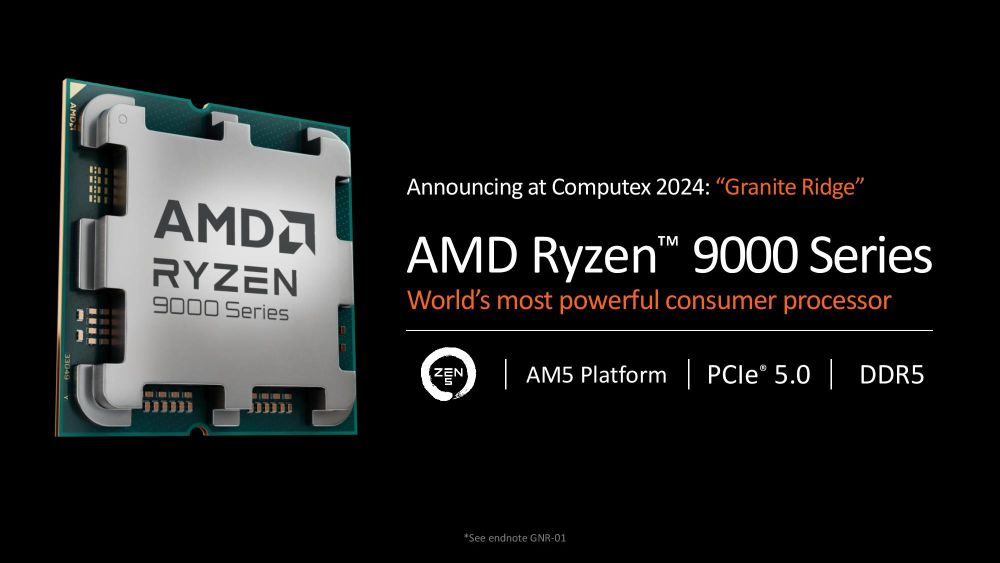
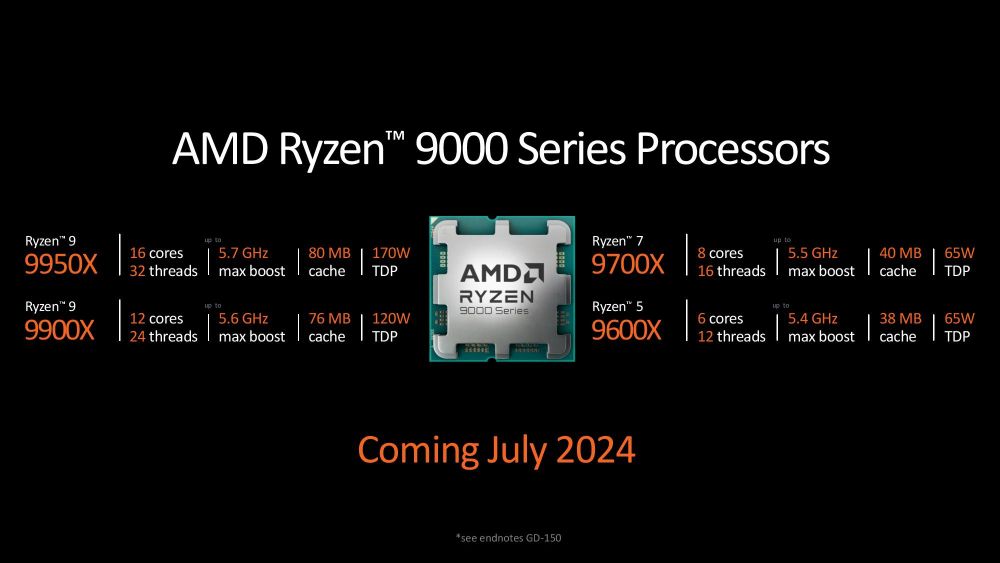
AMD is comparing it to the Intel Core i9-14900K in its performance numbers, giving it an edge of around 4 to 23 percent in gaming, and anywhere from 7 to 56 percent in applications. It also runs AI much faster with Mistral LLM showing a 20 percent improvement.
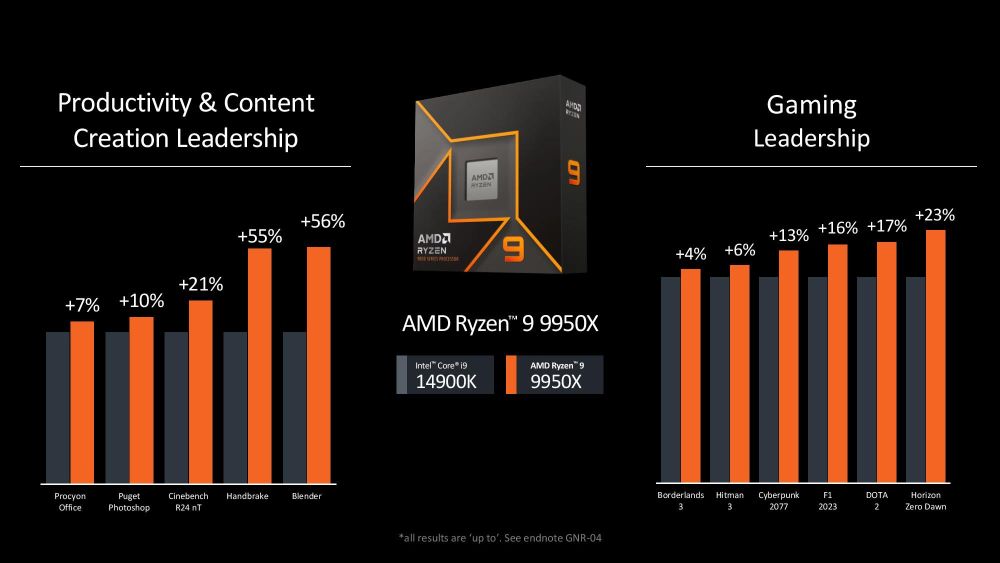
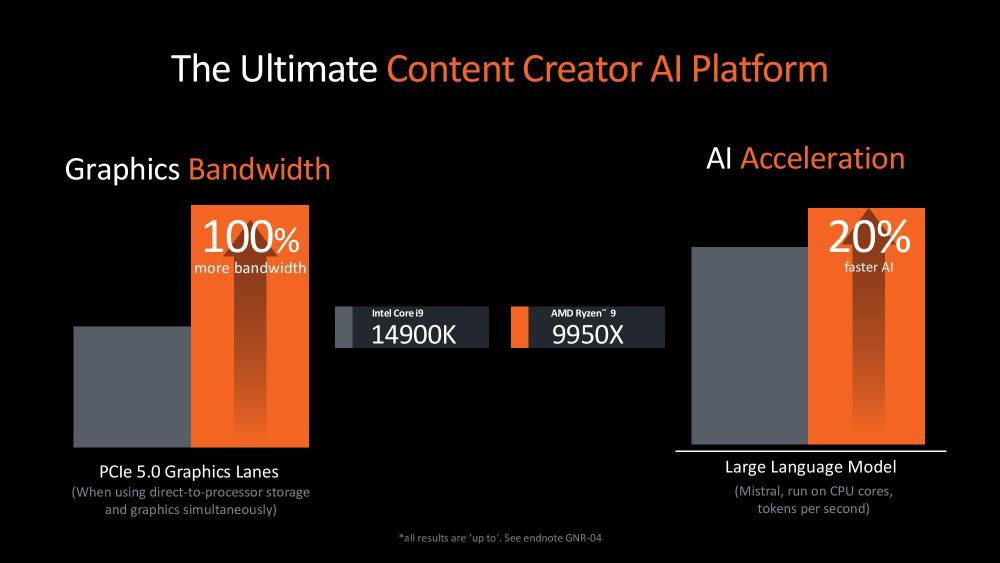
AMD is also launching the AMD X870E and X870 desktop chipsets with the new Ryzen 9000 series desktop processors, and these socket AM5 motherboards get PCI-Express 5.0 x16, USB4 connectivity, higher AMD EXPO memory frequencies, and more. Of course, the CPUs should work with AMD 600-series motherboards, and older Ryzen AM5 CPUs should work on these motherboards as well.
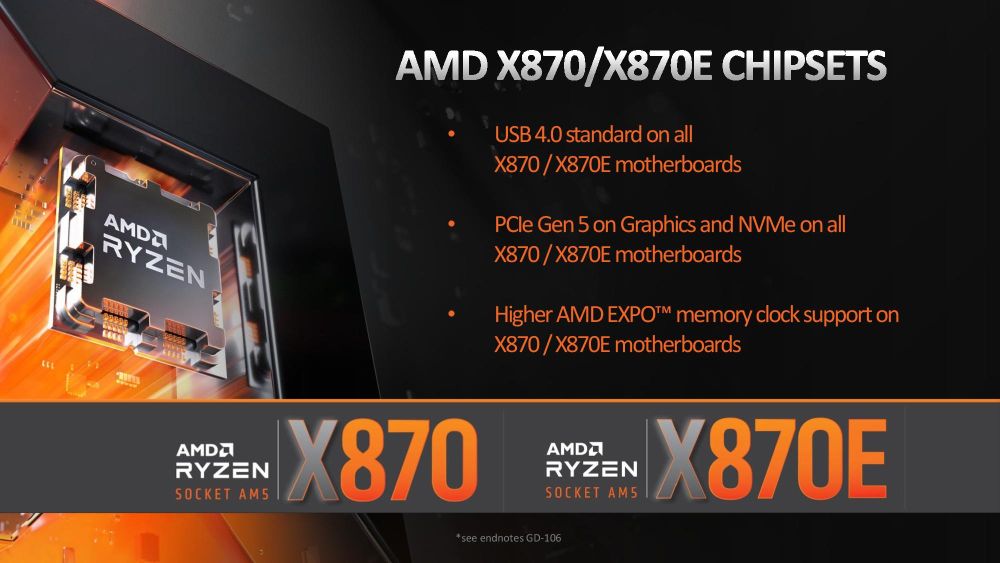
AMD Ryzen AI 300 series mobile processor for Copilot+ AI laptops
AMD has also launched a couple of new Ryzen AI 300 series mobile processors. Based also on Zen 5 architecture, the new XDNA 2 architecture NPU, and RDNA3+ graphics architecture, these should mark AMD's push into the "next-gen Copilot+ AI PCs" market.
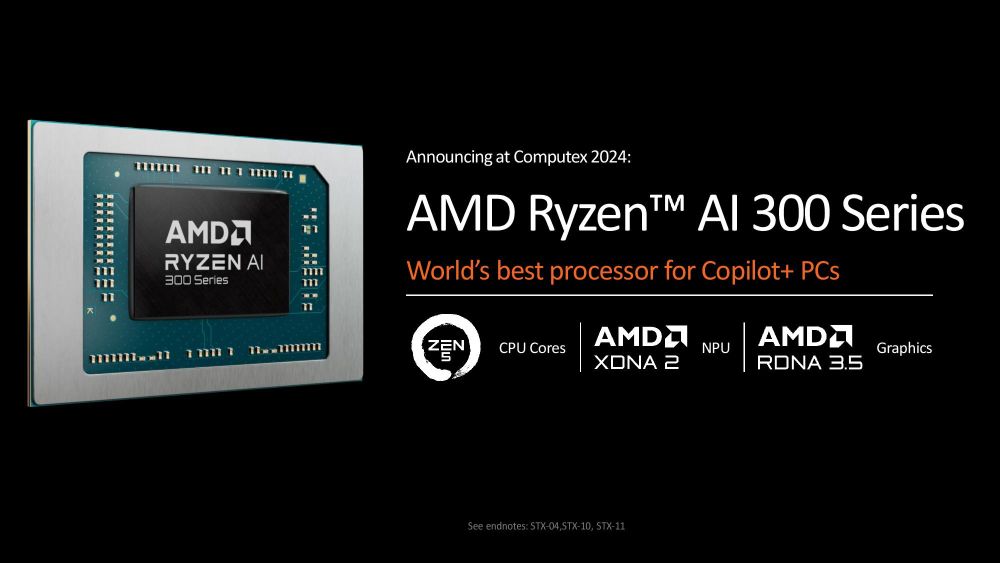

The new codename Strix Point Ryzen AI 300 series mobile processors get all the benefits of the Zen 5 architecture with a 16 percent IPC performance uplift, but also better AI performance from the new XDNA 2 NPU and 33 percent higher GPU performance from the RDNA 3+ GPU. AMD is also pushing the new 12-core/24-thread SKU, which should be an interesting SKU for gaming notebooks.
There are two SKUs, the Ryzen AI 9 HX 370 and the Ryzen AI 9 365. The flagship Ryzen AI 9 HX370 gets that 12-core/24-thread design with a 5.1GHz max boost, 36MB of cache, and Radeon 890M graphics. The Ryzen AI 9 365 is a cut-down version with a 10-core/20-thread design, 5.0GHz max boost, 34MB of cache, and Radeon 880M GPU. Both pump out 50 TOPs of NPU performance.
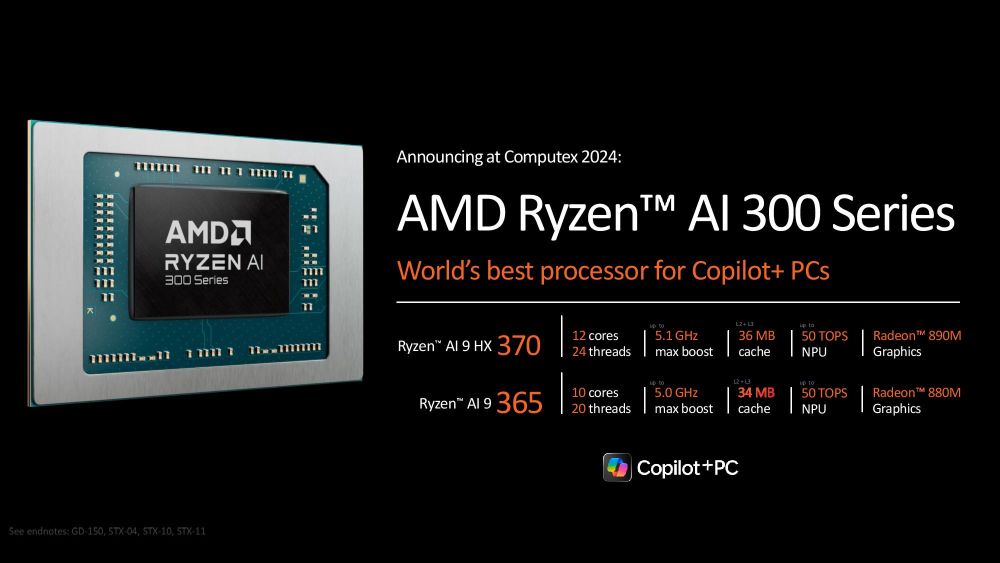
AMD says that it can beat Intel's Core Ultra 9 185H Meteor Lake processor by anywhere between 4 and 73 percent in productivity benchmarks, and leaves it in the dust in AI performance. It also gets a significant boost in games of 33 percent compared to the Arc GPU.
New laptops with these two Ryzen AI 300 series chips will be announced at Computex and AMD claims over 100 design wins this year.
